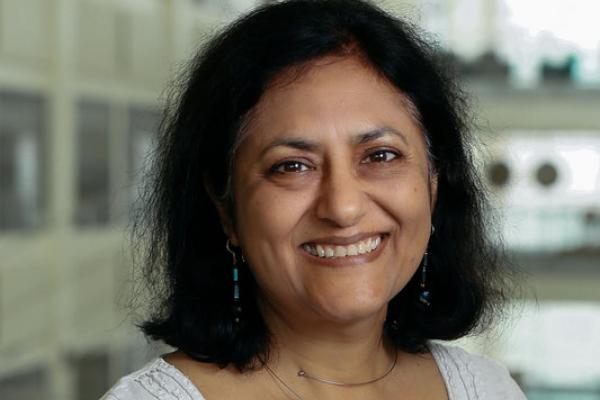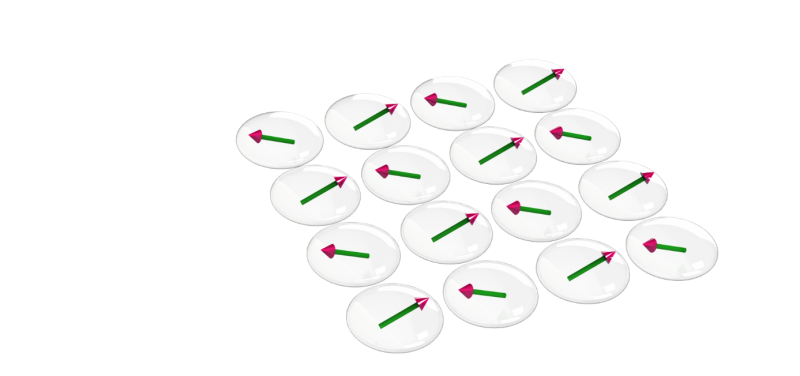Results from a collaboration including Ohio State's Nandini Trivedi to be published in SCIENCE

Applying strong magnetic fields to matter can give rise to new and often unexpected phenomena. This is particularly true at very low temperatures, where the quantum nature of the particles in a material becomes important and in the presence of strong interactions between the particles. In a joint experiment-theory collaboration paper recently published in Science magazine, a team of Princeton physicists from Professor Waseem Bakr’s group and theorists from Ohio State, San Jose State and Rio, have studied the behavior of a synthetic crystal of atoms in these extreme conditions of large field, low temperatures and strong interactions and found intriguing magnetic behavior in the crystal known as “canted antiferromagnetism”.
The experiments start by cooling a gas of lithium atoms to temperatures a few ten billionths of a degree above absolute zero to reach a state of matter known as a degenerate Fermi gas. The atoms come in two kinds, spin up and spin down spinning tops. The atoms are loaded into a two-dimensional potential of interfering light beams, a so-called optical lattice. In this lattice, the atoms can hop between neighboring sites and experience a strong repulsive interaction whenever they land on the same site. This arrangement is a very clean realization of a theoretical model, the Fermi-Hubbard model, widely believed to capture the essential phenomenology of high-temperature superconductors as first suggested by Princeton Nobel Laureate Philip Anderson.
The strong interactions between the atoms lead to a “Mott insulator”, a state where each site is occupied by only one atom. At high temperatures, the atomic spins are randomly oriented, while at lower temperatures and equal populations of the spin states, there is a transition to an antiferromagnet where neighboring spins prefer to have their directions anti-aligned, leading to a checkerboard pattern. These types of spin correlations had been observed last year in experiments at Harvard, MIT and LMU Munich.
The new twist in the Princeton experiments was to study the response of the atoms to a magnetic field, which they could probe by imbalancing the populations of the two spin states. Using a high-resolution microscope that can image individual atoms on the lattice sites, the team studied the change in the magnetic correlations of the atoms with the strength of the field. For strong fields, they observed that the antiferromagnetic spin correlations were stronger in the direction perpendicular to the field than along it, realizing a “canted antiferromagnet”.
The magnetic response of the gas when the number of atoms is less than the number of lattice sites shows behavior very similar to that seen in high-temperature superconductors. This strongly suggests that the system created with neutral atoms captures at least some aspects of these materials, which have immense technological potential but remain very poorly understood despite decades of intense theoretical research. The team will further study these atomic system at even lower temperatures to shed light on the mechanisms underlying the superconducting state in these quantum materials.
It is remarkable that a bunch of neutral atoms at ultra-cold temperatures should be able to capture the magnetic states seen in complex quantum materials. This points to the universality of physical principles.

